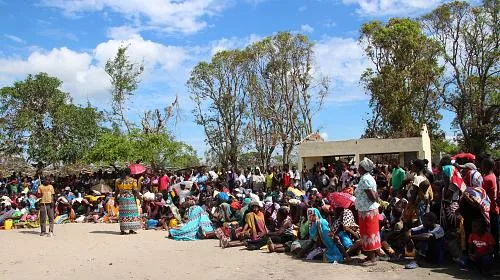BEIRA/HARARE/LILONGWE (April 12, 2019) — The effects of last month’s Cyclone Idai are threatening to create a catastrophic hunger crisis compounded by the existing food insecurity across southern Africa, CARE experts warn.
One month since the destructive storm swept across Mozambique, Malawi and Zimbabwe, the humanitarian situation remains critical. Hundreds of thousands of people have lost their livelihoods and require humanitarian assistance to survive.
“Hundreds of acres of crops have been lost and hundreds of thousands of people have been displaced from their homes; basic services have not yet been fully re-established,” said Matthew Pickard, CARE’s regional manager for central and southern Africa. “Simply put, the recovery from this disaster hasn’t begun yet and that is going to have a massive adverse impact on the ability of families to recover from this catastrophe.”
“We urgently need to implement robust food assistance and early recovery activities particularly looking at supporting affected families to replant the crops they lost in the cyclone and floods,” Pickard continued. “If we can get seed to families quickly they can take advantage of the residual moisture in the ground and they should be able to grow enough food to support their families throughout the year. If we miss this window of opportunity, the consequences for these families would be catastrophic. We are therefore calling on the international community and other donors to dig deep and urgently find additional funds to support the life-saving response.”
Described by the UN as “one of the deadliest storms on record in the southern hemisphere,” Idai made landfall the night of March 14 near the Mozambican port city of Beira, bringing heavy winds and rains. The storm then moved inland to neighboring Zimbabwe and Malawi causing devastating destruction of farmlands and livelihoods.
Mozambique
The situation is particularly alarming in Mozambique where hundreds of thousands of homes have been destroyed or damaged by flooding and over 73,000 people are living in temporary shelters. The floodwaters that left a large part of central Mozambique a vast inland sea are draining away, revealing swaths of agricultural land desolate. Rice and maize fields were destroyed and unless families are able to replant quickly they will face a severe food shortage in the month ahead.
“Even before the cyclone, more than 40 percent of children in Mozambique were physically stunted, according to the UN,” said Marc Nosbach, CARE’s Mozambique country director. “Now this may worsen due to food shortages.”
Nosbach said the biggest challenges are around resources, capacity and funding. Thousands of people remain in hard to reach areas of Mozambique, surrounded by floodwater, he explained. “The heavy lifting that is needed to get the people and resources to reach those in need is costly and requires fast and flexible funding to do so,” he said.
“Despite the comprehensive destruction and enormity of needs, the response so far is only 18% funded. While donors have been generous in terms of the initial military assets to aid the search and rescue phase, more money is needed now to be channeled to organizations on the ground to scale up the response to provide basic life-saving support.”
Zimbabwe
CARE experts in Zimbabwe note that Idai’s decimation of livelihoods and food security has been compounded by the extensive damage to infrastructure.
“In this region (Chimanimani) most of the people affected are reliant on agriculture for their livelihoods and often their own survival,” explained Abel Whande, CARE’s emergency coordinator in Zimbabwe. “The cyclone struck when people were on the last of their food before the next harvest.”
CARE’s approach on early recovery includes supporting communities with cash-for-work initiatives that will empower them to buy food at the markets; and have the independence to recover their farming livelihoods, Whande explained.
“We are placing women and girls at the center of our market assessments and ensuring that they are the prime beneficiaries as this disaster has affected them the most.”
About CARE
Founded in 1945 with the creation of the CARE Package®, CARE is a leading humanitarian organization fighting global poverty. CARE places special focus on working alongside women and girls because, equipped with the proper resources, they have the power to lift whole families and entire communities out of poverty. That’s why women and girls are at the heart of CARE’s community-based efforts to impArove education and health, create economic opportunity, respond to emergencies and confront hunger. Last year CARE worked in 93 countries and reached more than 63 million people around the world. Learn more at care.org.
Media Contact:
Nicole Harris, 404-735-0871, nharris@care.org

